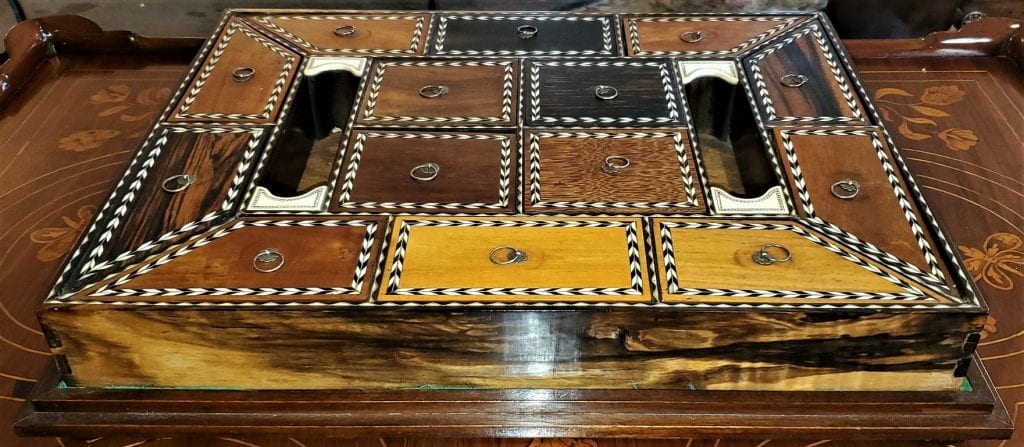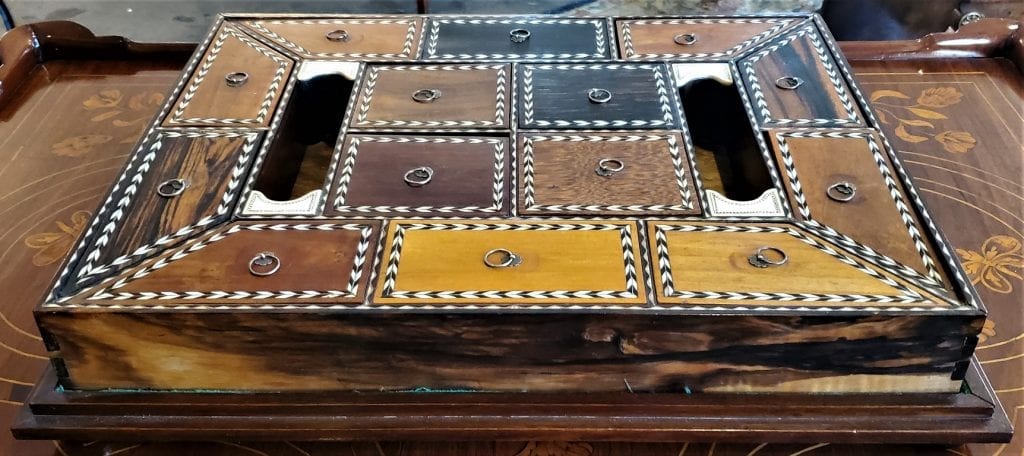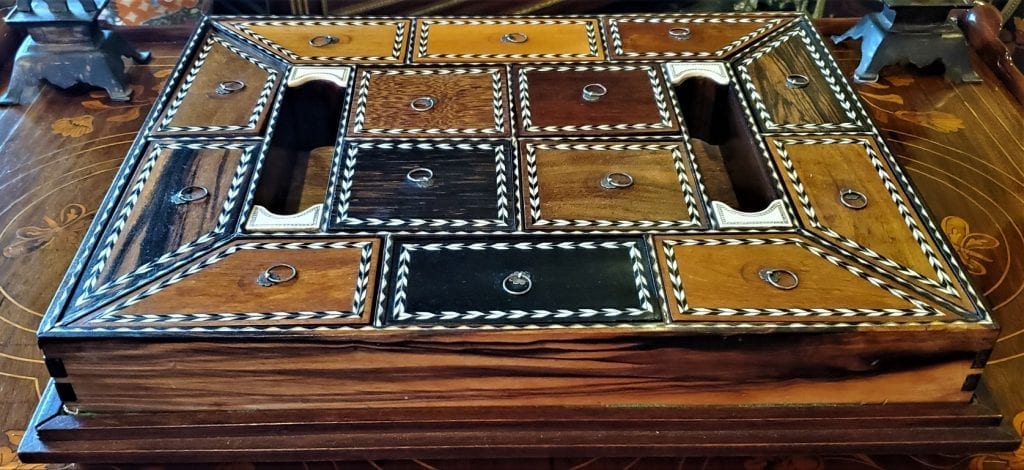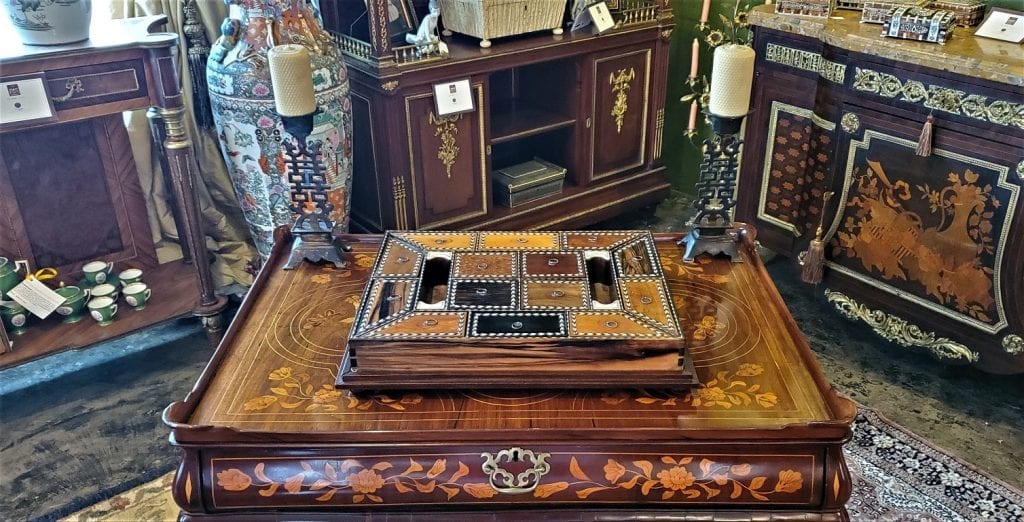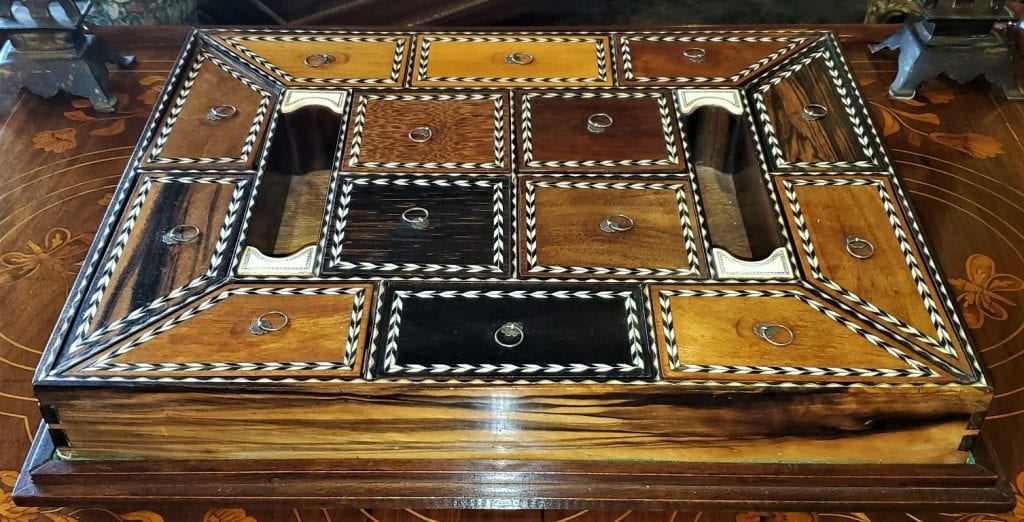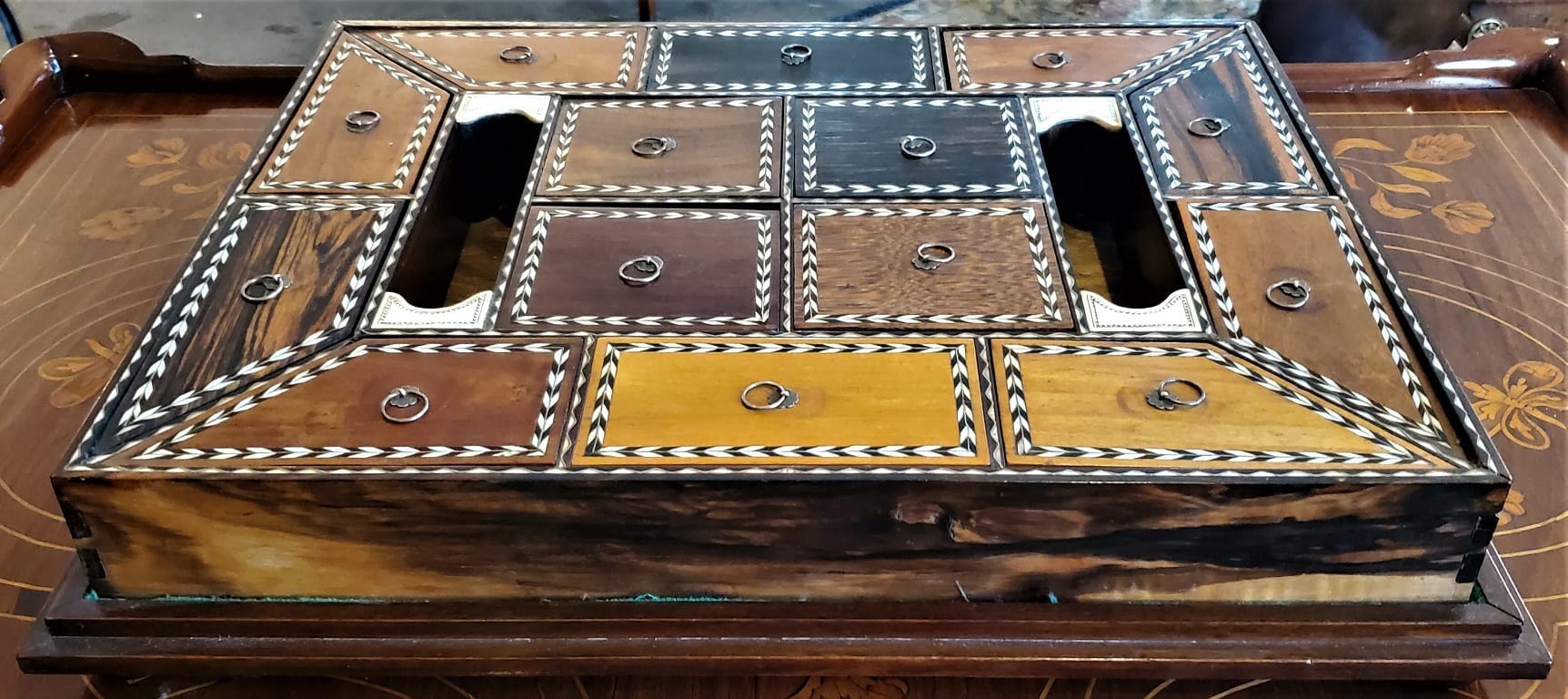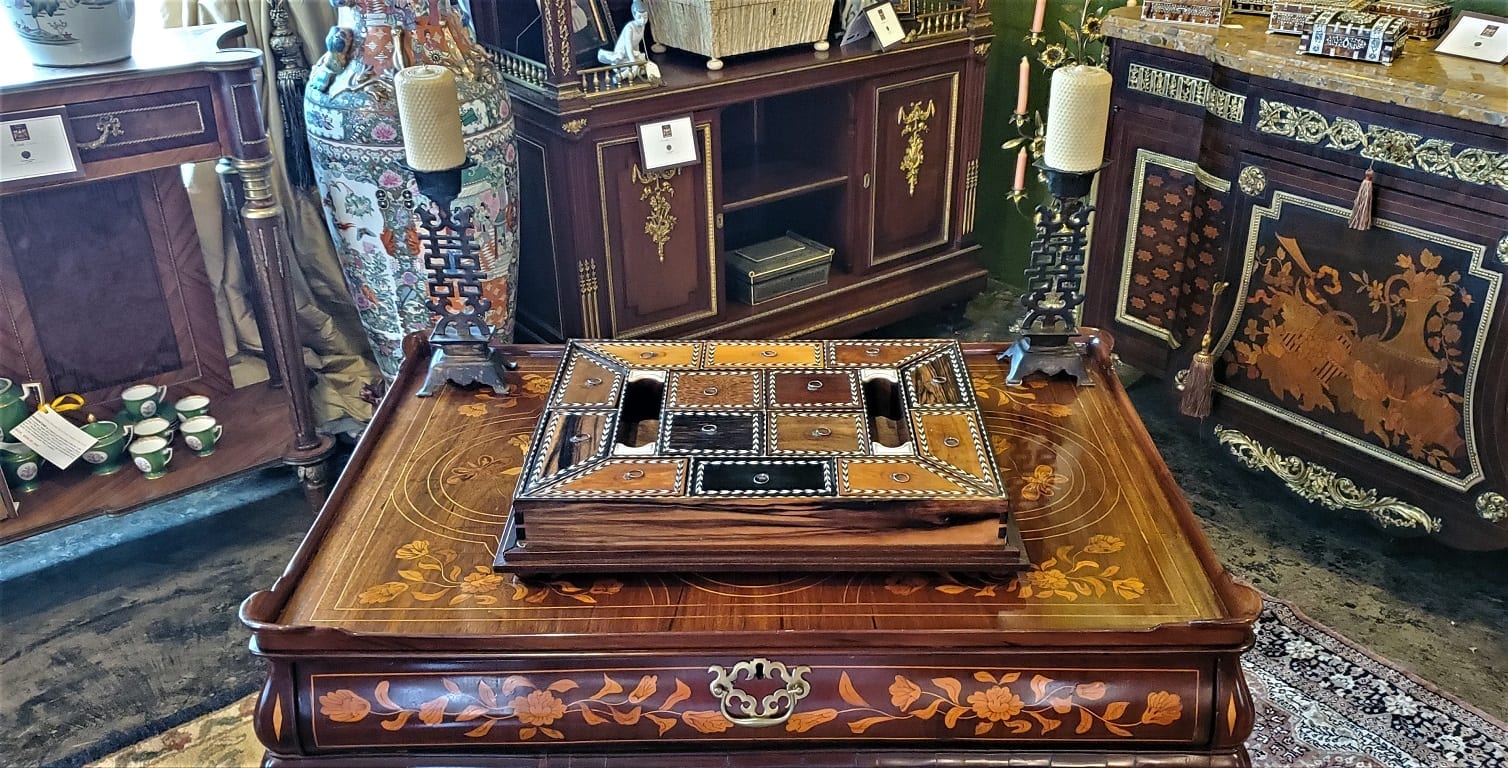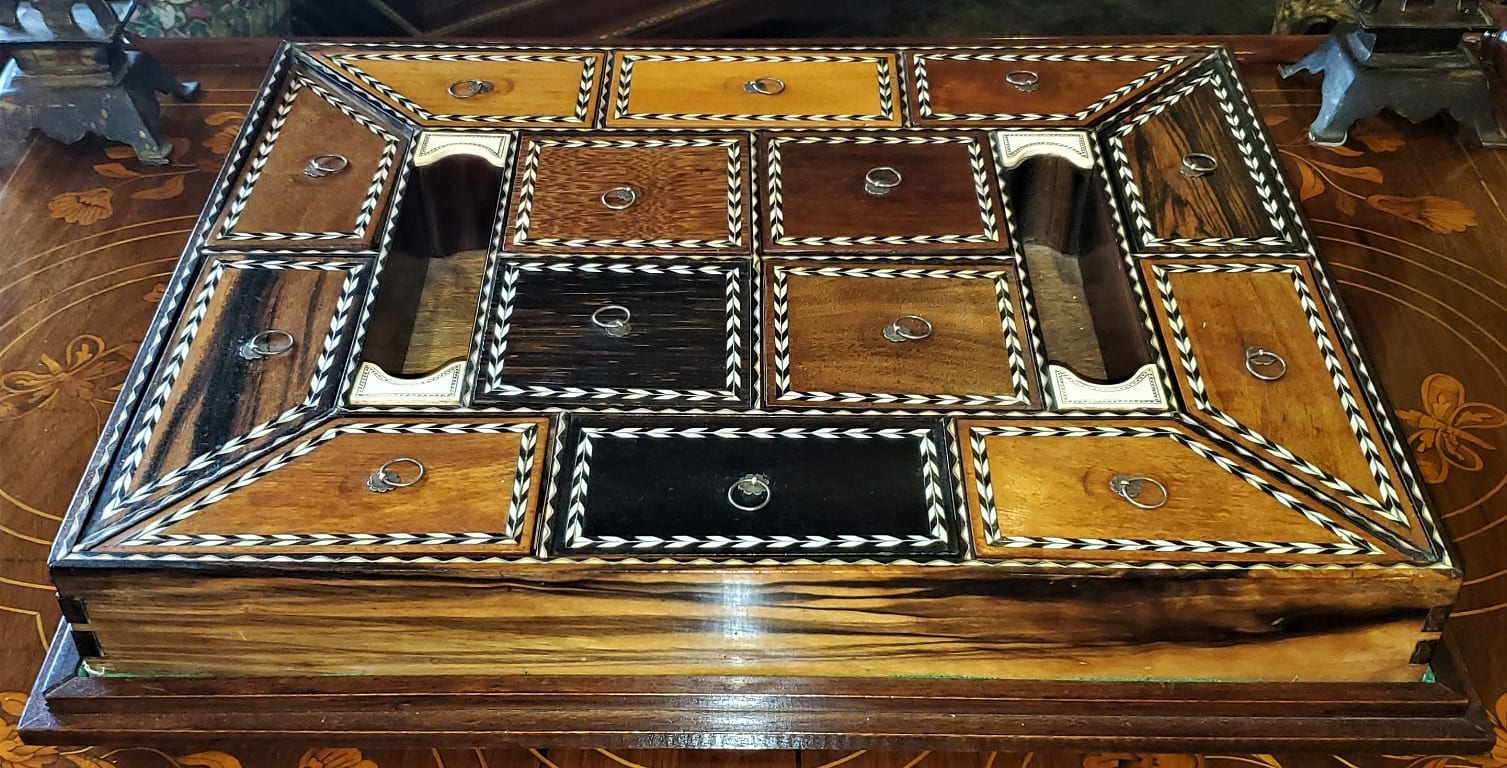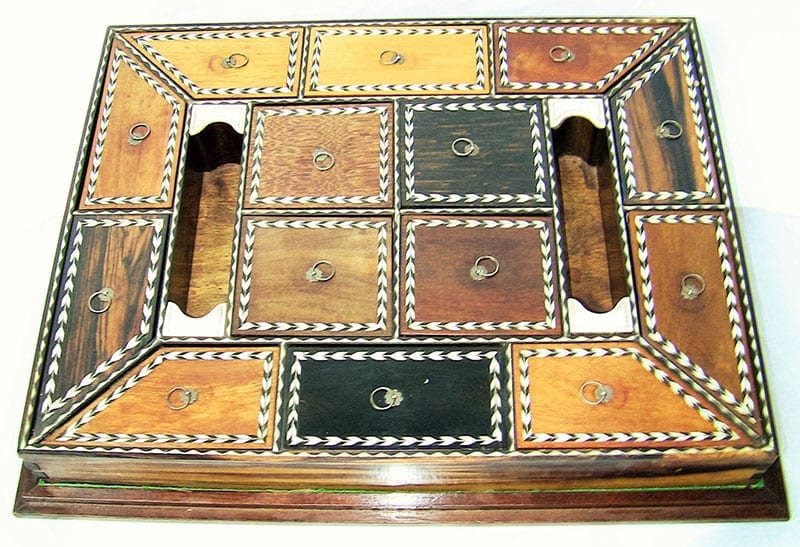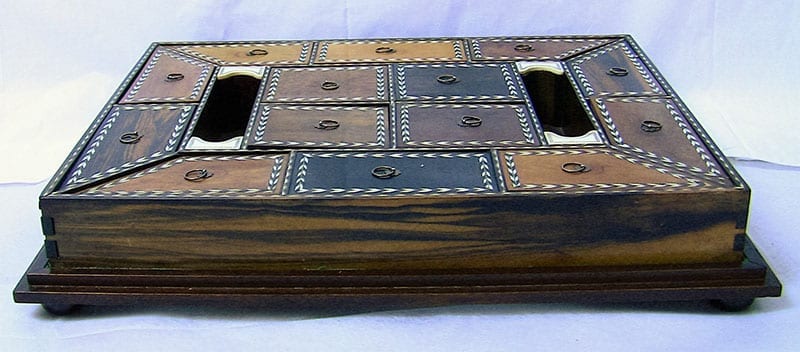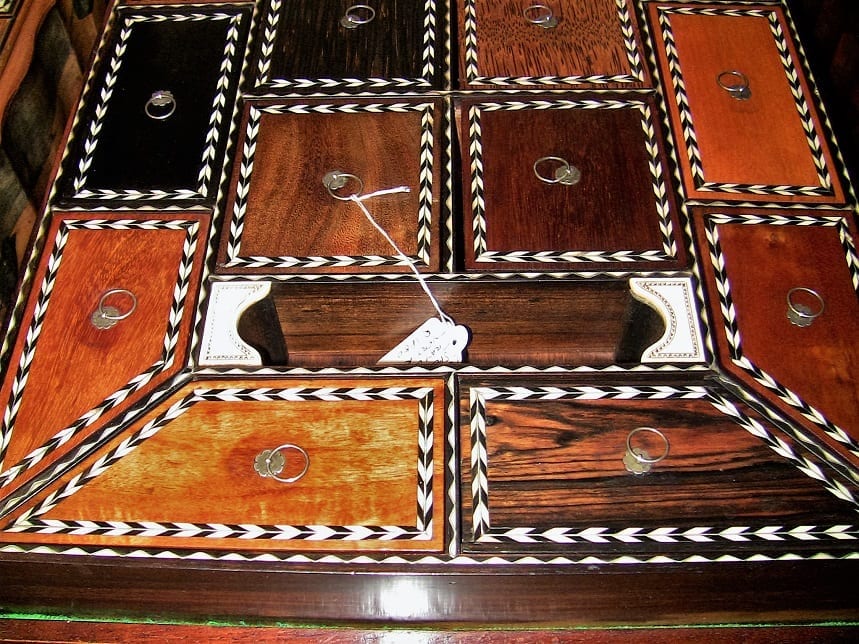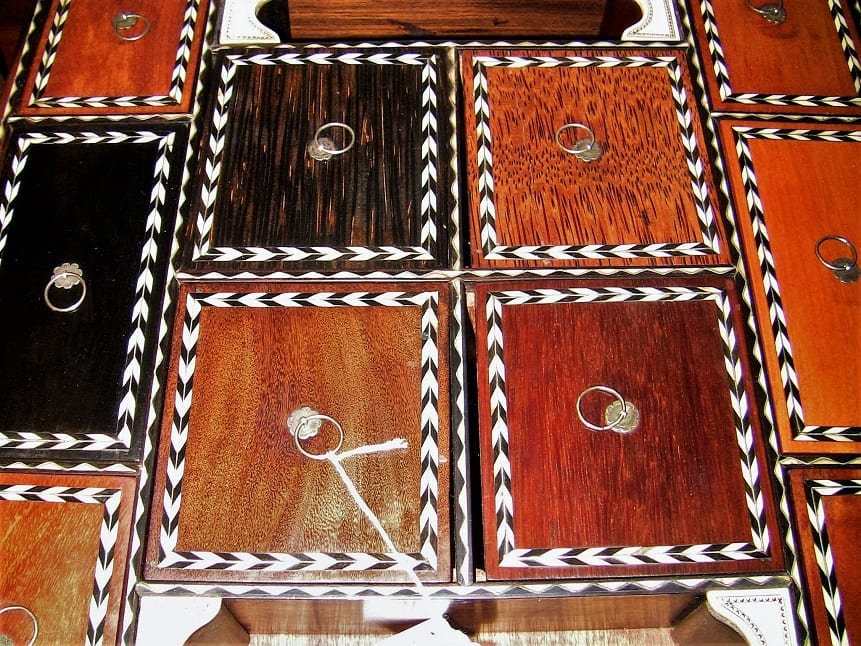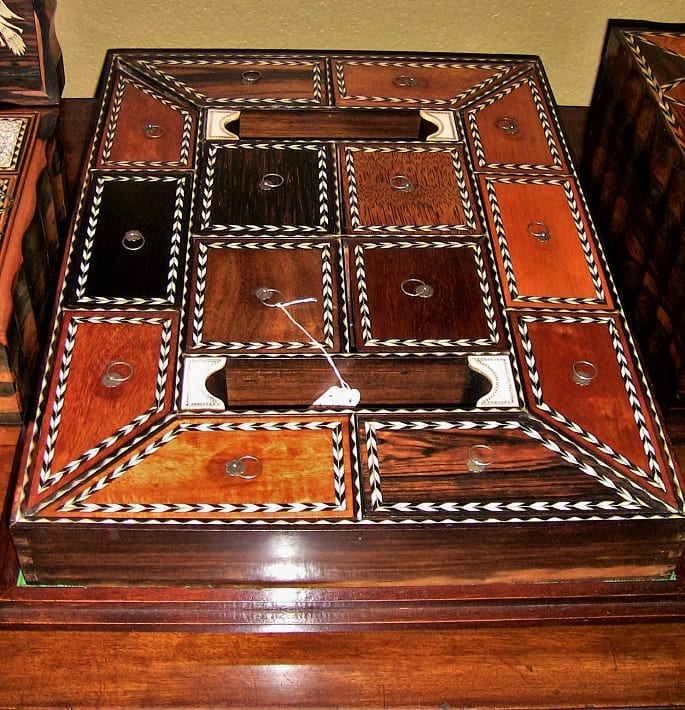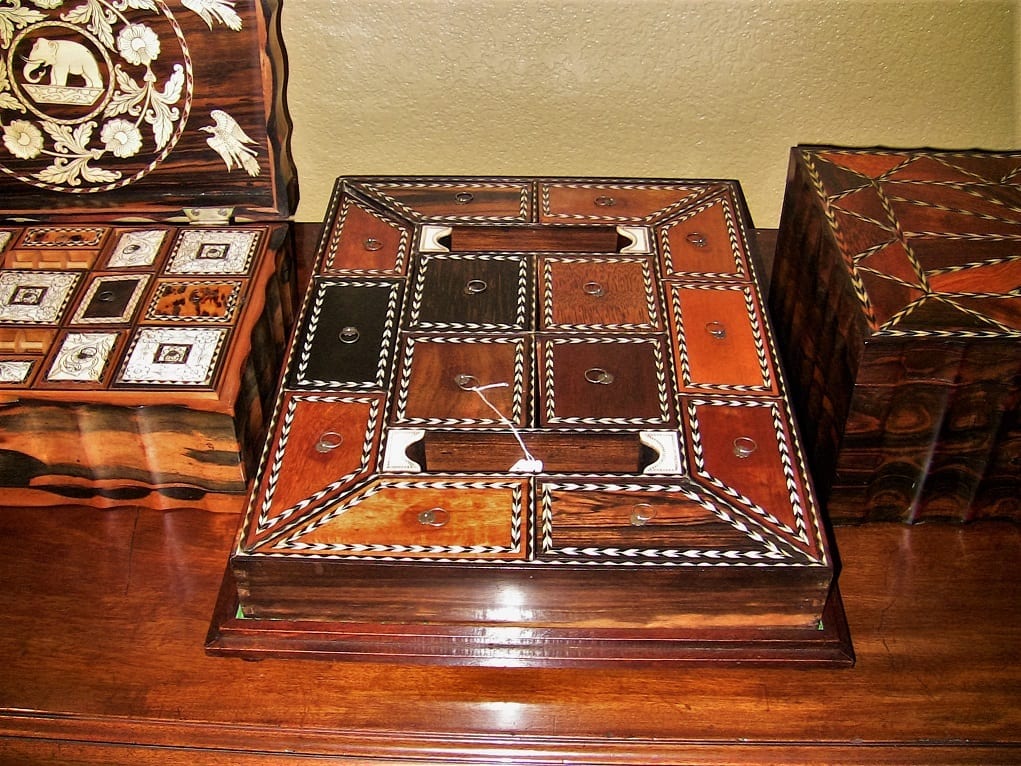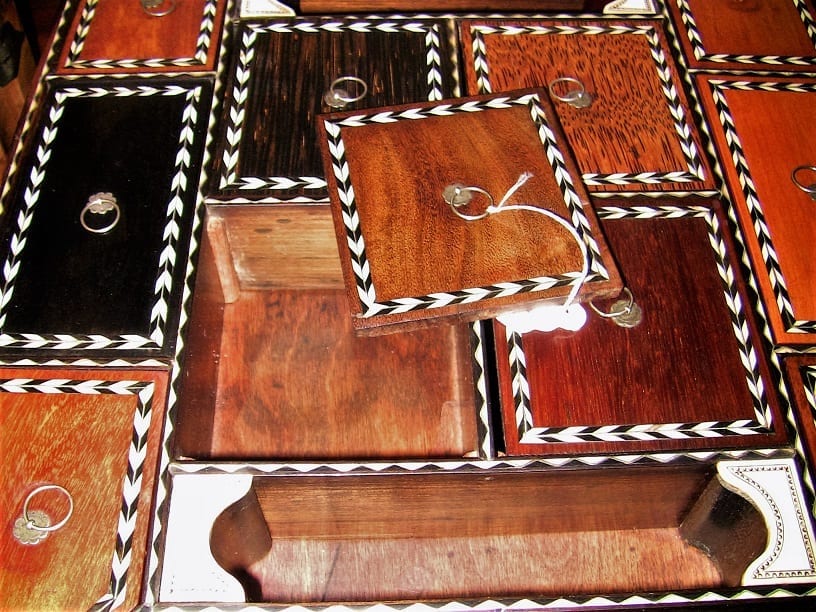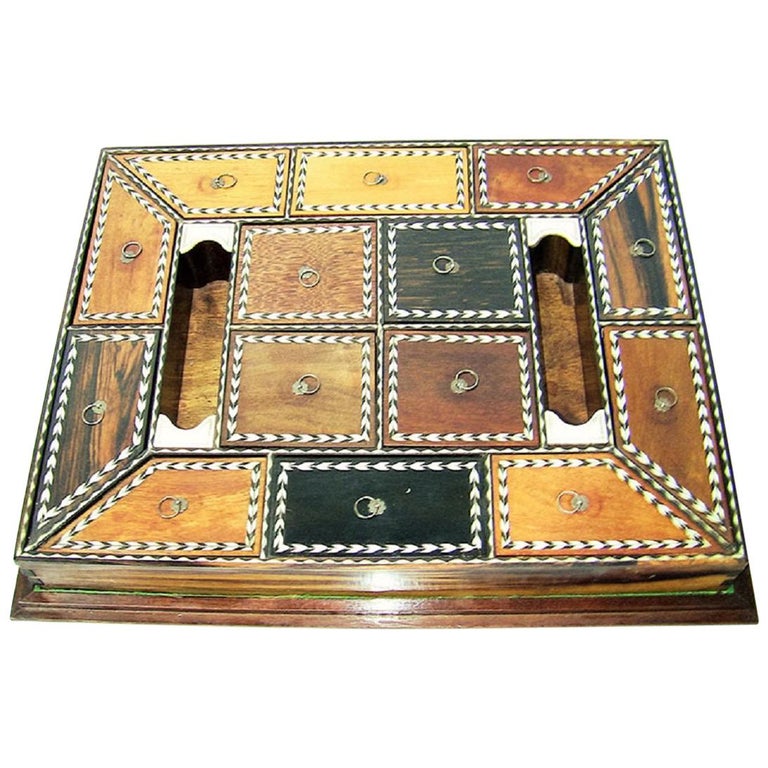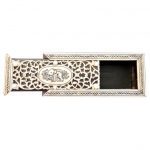19C Anglo Ceylonese Specimen Wood Desk Companion Tray on Stand
PRESENTING A STUNNING AND EXCEPTIONALLY RARE 19C Anglo Ceylonese Specimen Wood Desk Companion Tray on Stand.
Another stunning 19C Anglo-Ceylonese piece (see the matching box in this category).
Made circa 1880 in Ceylon (now Sri Lanka) of Coromandel wood, bone, ebony, silver and various specimen hardwoods.
THIS IS A SIMPLY GORGEOUS AND QUALITY ITEM.
We have never seen another like it, in 25 years of collecting Anglo-Ceylonese items!
The tray consists of 14 lidded compartments, with various high quality specimen wood lids, all edged and banded in chevrons of bone, silver and ebony. It also has 2 open compartments with hand painted and decorated bone/faux ivory ends. The tray itself is made of expensive coromandel wood.
The main tray sits onto a base (also made of coromandel wood, indicating that it is original to the piece) with green baize lining.
This tray could have a number of practical uses; for keeping stationary, watches, jewelry, or (thinking outside of the box) holding your remote controls and candy! (LOL).
PERFECT AS A DESK COMPANION!
ANGLO-INDIAN AND CEYLONESE BOXES: Anglo Indian boxes were made in India for the English residents from the early part of the 18th century. They were brought back or sent back to England usually by the people who had commissioned them. From the beginning of the nineteenth century they were imported more commercially, although not in any significant numbers until the middle decades. They were very highly valued, especially the early ones, to the extent that the designs were copied on late 19th and early 20th century tins.
Anglo-indian Boxes normally consist of 3 main types:-
(1) Most of the best and highest quality Anglo-Indian boxes in the 18th and 19th Centuries were made in Vizagapatam, India, renowned for its exquisite craftsmanship in using ivory and tortoiseshell and lac decoration. These are referred to as ‘Vizagapatam Boxes’.
(2) The Bombay area became famous in the 19th Century for its carving of sandalwood boxes and use of Sadeli Mosaic. These are often referred to ‘Sadeli Boxes’.
(3) Many boxes of exquisite quality and craftsmanship were made in Ceylon (modern day Sri Lanka) in the 19th Century. Ceylon was part of the British Indian Colony and was not a separate Country at that time, hence, the boxes that were made in Ceylon are often categorized as Anglo-Indian. Many of the Anglo-Ceylonese pieces were made in the Goa Region using Porcupine Quill, Coromandel or Salamander wood, ivory, ebony and lac decoration. The Ceylonese lac work was often more colorful than the Vizagapatam classic use of black lac ink.(Lac ink was an indelible ink made from crushing Lac Beetles). Ceylonese boxes and furniture also became famous, due to the use of various exotic specimen woods in the decoration of their boxes and furniture. These specimen wood pieces are HIGHLY PRIZED AND HIGHLY DESIRABLE!
This box falls into Category 3 above, SPECTACULAR AND VERY, VERY RARE!
COROMANDEL WOOD: Calamander wood or Coromandel wood is a valuable wood from India, Sri Lanka (Ceylon) and South East Asia. It is of a hazel-brown color, with black stripes (or the other way about), very heavy and hard. It is also known as Macassar Ebony or variegated ebony and is closely related to genuine ebony, but is obtained from different species in the same genus; one of these is Diospyros quaesita Thwaites, from Sri Lanka. The name Calamander comes from the local sinhalese name, ‘kalu-medhiriya’, which means dark chamber; referring to the characteristic ebony black wood. It is used in furniture, Luthiery and for sculpture.
Coromandel wood has been logged to extinction over the last 2 to 3 hundred years and is no longer available for new work in any quantity. Furniture in coromandel is so expensive and so well looked after that even recycling it is an unlikely source. A substitute, Macassar Ebony, has similar characteristics and to the untrained eye is nearly the same but it lacks the depth of colour seen in genuine Coromandel.
Link: https://en.wikipedia.org/wiki/Calamander_wood
CHECK OUT, THE MATCHING ANGLO-CEYLONESE SPECIMEN WOOD BOX ALSO IN THIS SECTION:
Link: https://rockwellantiquesdallas.com/19c-anglo-ceylonese-sewing-box-of-museum-quality/
19C Anglo Ceylonese Specimen Wood Desk Companion Tray on Stand.
Provenance: Part of our Extensive Anglo-Indian/Ceylonese Collection.
Dimensions: The Tray is 14.58 inches Wide, 19 inches deep and 2.5 inches tall
The Base is 1.58 inches tall, 16.25 inches Wide and 20.5 inches deep
Condition: Very good original condition.
SALE PRICE NOW: $2,800
